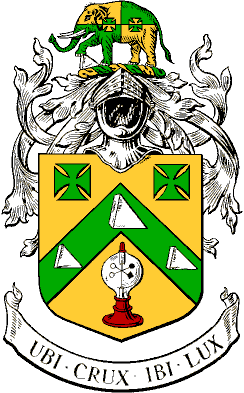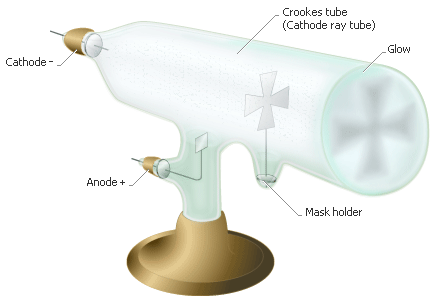

Sir William Crookes (1832-1919)
(Thallium in 1861,
radiometer and "Crookes tubes" c. 1875)
The above depiction is a colorized version of a drawing found in
Heraldry: A Pictorial Archive for Artists & Designers
(Arthur Charles Fox-Davies)
[ Thanks to Guy H. Power for unearthing this one... ]
Or, on a chevron Vert three prisms Argent between two crosses pattee
of
the Second in chief and a radiometer Proper in base.
Crest:
On a wreath of the colors, an elephant quarterly Or and Vert bearing
two crosses patty
counterchanged, the dexter paw resting on a prism Argent.
Motto:
Ubi Crux, Ibi Lux. (Here the cross, there the light.)

